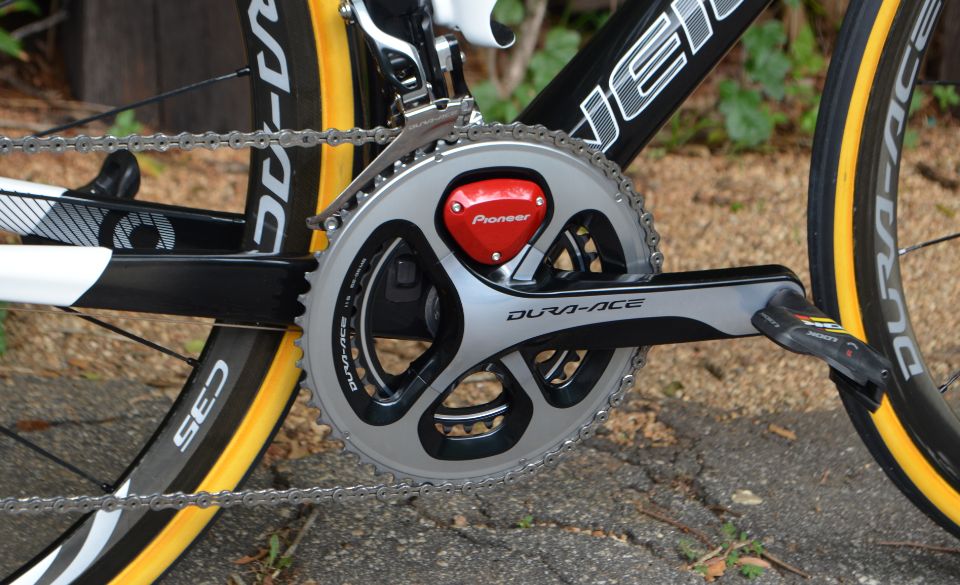
Maximize Your Cycling Training with a Power Meter
Page Contents
Cycling with power is one of the most effective ways to structure and optimize your training. Power meters give you an objective measure of your effort and fitness in real-time, allowing you to precisely track your progress and tailor your workouts. This comprehensive guide will teach you how to utilize a power meter to reach your cycling goals.
An Introduction to Power Meters
A cycling power meter is a device installed on your bike that measures the watts you generate while pedaling. It gives you immediate feedback on your power output, letting you see how hard you are working at all times.
The three main types of power meters are:
– Crank-based: measures power at the crankset.
– Pedal-based: built into the pedal spindle.
– Hub-based: installed in the rear hub.
Power meters link to your bike computer or GPS device to display and record your watts in real-time as you ride. This makes pacing easier and helps structure interval sessions.
Tracking your training with power provides many benefits:
– Objective data to quantify your fitness.
– Structure workouts based on specific wattage zones.
– Pace yourself evenly over long distances.
– Compare efforts on different terrain or days.
– Monitor progress over time.
Now let’s look at how to effectively use a power meter for cycling training.
Determining Your Power Zones
The foundation of power-based training is establishing your personal power zones. These are wattage ranges that correspond to different intensities and training adaptations.
There are a few ways to determine your zones:
– Use wattage formulas: Formulas based on your FTP (functional threshold power) or CP (critical power) estimate power zones.
– Perform a ramp test: Ride intervals with increasing wattages to determine zones.
– Get lab testing: VO2 max and lactate testing provide accurate power data.
– Try an online calculator: Input ride data for zone estimates.
– Use trial and error: Ride and adjust zones based on feel.
It’s best to retest your zones every 4-6 weeks as your fitness improves. Having accurate zones ensures your workouts hit the right intensities.
Here is an example of basic power zones based on percentage of FTP:
– Zone 1: 56-75% FTP – Active Recovery
– Zone 2: 76-90% FTP – Endurance
– Zone 3: 91-105% FTP – Tempo
– Zone 4: 106-120% FTP – Lactate Threshold
– Zone 5: 121-150% FTP – VO2 Max
Structuring Your Power-Based Training
With your zones established, you can now optimize workouts to target specific goals:
Build a Foundation with Zone 2
– Long rides in zone 2 improve aerobic endurance and efficiency.* Focus on keeping watts steady over hours. This elevates lactate threshold for harder efforts.
Increase Threshold Power with Zone 3
– Zone 3 tempos boost lactate threshold power.* Ride intervals at ~90-95% FTP with full recoveries. These efforts become easier over time.
Improve VO2 Max with Zone 5 Intervals
– Short/hard zone 5 intervals increase VO2 max – your maximum oxygen uptake.* Go as hard as possible for 1-5 minutes, fully recovering between efforts.
Increase Power with Zone 4 Threshold Intervals
– Zone 4 intervals target lactate threshold.* Ride hard at ~105-120% FTP for 3-8 minutes with equal rest. This directly boosts sustainable power.
Build Muscular Endurance with Zone 3
– Long zone 3 intervals grow time to exhaustion at threshold.* Do 10-30 minutes at ~90% FTP. Increase duration over time to increase endurance.
Recover with Zone 1 Spinning
– Zone 1 is for active recovery.* Spin easy after hard workouts to flush waste from your muscles. This prevents overtraining.
A complete program incorporates all zones for well-rounded adaptation. Periodize training by emphasizing different zones in cycles over a season.
Executing Power-Based Workouts
Now for some tips on executing effective power-based workouts:
1. Warm up first – Gradually ride up through the zones before starting intervals. This primes your muscles and cardiovascular system.
2. Use a structured interval format – Follow a planned interval workout with specific wattages and durations for each interval.
3. Focus on consistency – Keep wattage steady through efforts. Don’t go too hard early. Pace yourself.
4. Recover fully between intervals – Drop wattage into zone 1, pedaling easy. Let heart rate and breathing normalize.
5. Use gearing efficiently – Utilize gears to maintain cadence in different wattage zones. Don’t mash big gears.
6. Monitor intensity with heart rate – Heart rate corresponds to zones. Pair HR and power data to optimize pacing.
7. Fuel and hydrate consistently – Take in calories and fluids at regular intervals during long workouts.
8. Record all training data – Analyze workout files later to identify weaknesses and improvement.
9. Listen to your body – Adjust on the fly if overly fatigued. End early if needed.
10. Focus, consistency, recovery, and periodization are the keys to effective power training.
Measuring Cycling Fitness With a Power Meter
One major benefit of training with power is the ability to precisely track fitness gains. Here are the key metrics to monitor:
– FTP: Your functional threshold power. The max watts you can sustain for ~1 hour. A key indicator of fitness.
– CP: Your critical power. The power you can maintain without fatigue for ~30-60 min. Represents metabolic pathways.
– VO2 max: The max watts you can hold for 3-5 minutes. Indicates oxygen processing capacity.
– Anaerobic capacity: Your max power for 10-30 seconds all-out. Measures glycolytic energy ability.
– Power duration curve: Graph your max sustainable power over time. As you get fitter, you can hold higher watts longer.
– Power to weight ratio: Watts per kilogram. Shows your power output relative to body weight.
Tracking these metrics over time provides definitive data on your fitness progression. Set goals for improvement, train systematically, then test frequently to monitor gains.
Applying Power Meter Data to Your Training
To fully benefit from a power meter, you need to regularly analyze your data and adjust your training accordingly. Here’s how to apply power numbers:
1. Identify weaknesses – Assess power durations to find areas lagging. Shore up weaknesses with focused training.
2. Set specific goals – Establish quantitative goals for FTP, CP, etc. Train systematically to achieve them.
3. Refine zones – Tweak zone wattages up or down based on recent testing data. Keep zones accurate.
4. Measure progress – Compare new test numbers to past results. This validates your training effectiveness.
5. Adjust workouts – Increase interval intensity or duration as fitness improves. Maintain a training load that drives continued adaptation.
6. Compare similar workouts – Look at average power for common routes/loops. Improving watts indicates progress.
7. Determine rest needed – Note declining power data as an indicator of fatigue. Take a rest day when watts drop.
8. Inform bike position changes – Wattage discrepancies between left/right legs can indicate fit issues. Address these.
Consistently applying power data ensures your training stays targeted and responsive to your current fitness. This optimizes development.
Helpful Tips for Training with Power
To wrap up, here are some helpful tips for effectively integrating a power meter into your training:
– Find the right power zones for your ability – they form the basis for targeted training.
– Vary workouts for complete development – hit all zones with proper periodization.
– Execute intervals purposefully – stick to the plan and focus on consistency.
– Frequently retest metrics – monitor fitness gains and refine training.
– Analyze data trends – make your training responsive.
– Allow adequate rest and recovery – power drops are red flags.
– Ensure accurate zone calculations – have zones regularly assessed.
– Be patient and trust the process – fitness comes with consistency over time.
Training with a power meter provides definitive, real-time feedback on your efforts. Use the valuable watts data to precisely structure and periodize workouts to reach your highest potential. Cycling power will take your training and performance to the next level!
Frequently Asked Questions
How often should I retest my power zones?
Retest your FTP and power zones every 4-6 weeks. As your fitness improves, you need to increase zones to keep workouts adequately challenging. Regular reassessment ensures training stays targeted.
What duration power intervals target different energy systems?
10-30 seconds = Maximal anaerobic/glycolytic power
1-5 minutes = VO2 max intervals
3-8 minutes = Lactate threshold intervals
10-30+ minutes = Muscular endurance/tempo
How do I pace intervals to avoid going too hard too early?
Use perceived exertion along with power to pace efforts. Begin intervals a bit conservatively, building into the prescribed wattage over time. Avoid sudden power spikes. Slowly settle into the target intensity.
Conclusion
Power-based training provides a wealth of valuable performance data. With the knowledge from this guide, you now have the tools to harness the power meter’s feedback to optimize your cycling workouts. As you implement targeted sessions, test frequently, periodize properly, and refine over time, the gains will come. So embrace the data, train smarter using your power meter, and you’ll reach new heights in your cycling.



